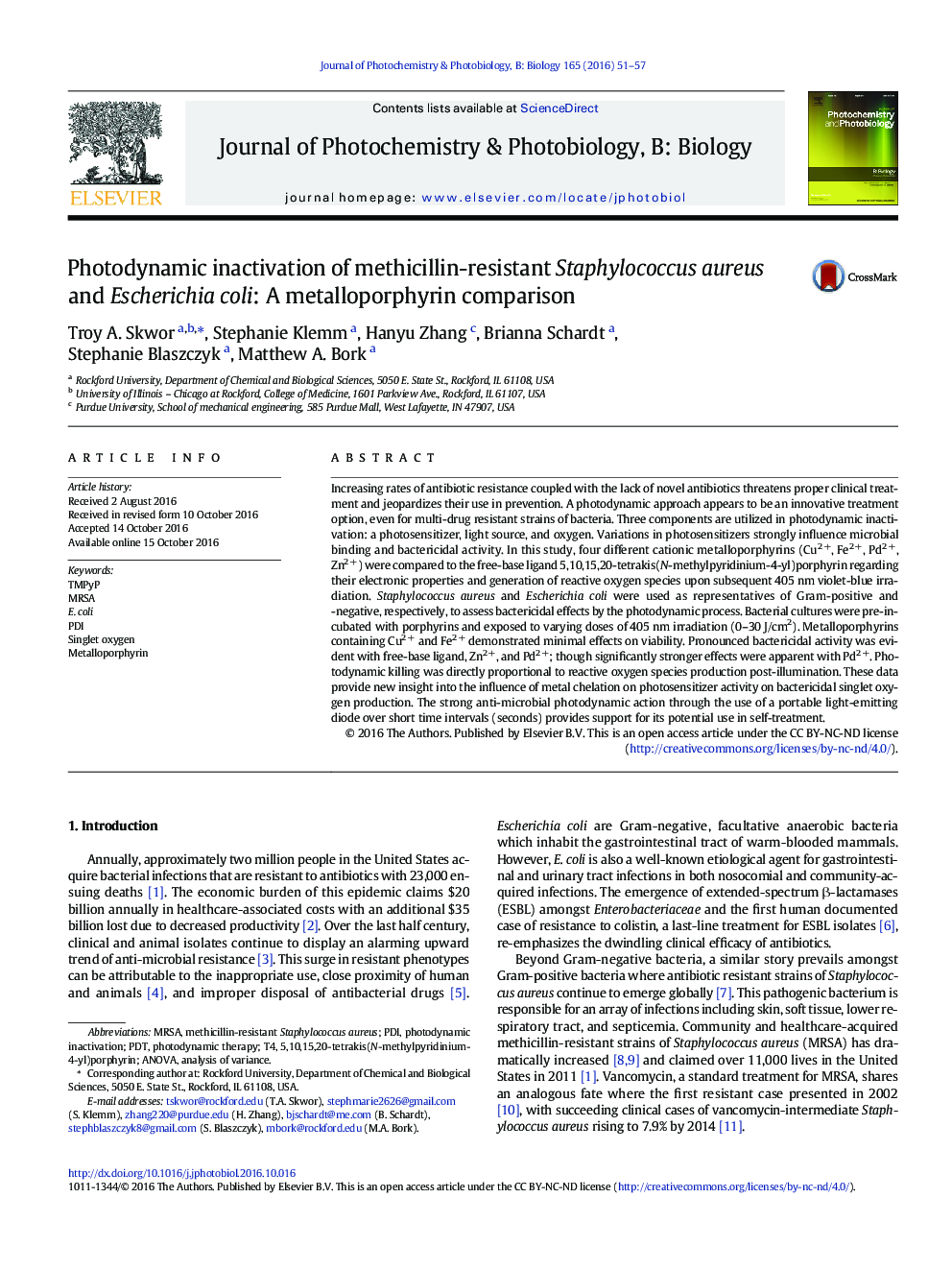| کد مقاله | کد نشریه | سال انتشار | مقاله انگلیسی | نسخه تمام متن |
|---|---|---|---|---|
| 6452575 | 1418068 | 2016 | 7 صفحه PDF | دانلود رایگان |

- Chelation of palladium with photosensitizer had optimal bactericidal activity.
- Gram-positive MRSA was more susceptible to PDI compared to Gram-negative E. coli.
- Reduced glutathione abrogates PDI activity associated with metalloporphyrins.
- Utilizing handheld LEDs for PDI supports its use for self-treatment.
Increasing rates of antibiotic resistance coupled with the lack of novel antibiotics threatens proper clinical treatment and jeopardizes their use in prevention. A photodynamic approach appears to be an innovative treatment option, even for multi-drug resistant strains of bacteria. Three components are utilized in photodynamic inactivation: a photosensitizer, light source, and oxygen. Variations in photosensitizers strongly influence microbial binding and bactericidal activity. In this study, four different cationic metalloporphyrins (Cu2Â +, Fe2Â +, Pd2Â +, Zn2Â +) were compared to the free-base ligand 5,10,15,20-tetrakis(N-methylpyridinium-4-yl)porphyrin regarding their electronic properties and generation of reactive oxygen species upon subsequent 405Â nm violet-blue irradiation. Staphylococcus aureus and Escherichia coli were used as representatives of Gram-positive and -negative, respectively, to assess bactericidal effects by the photodynamic process. Bacterial cultures were pre-incubated with porphyrins and exposed to varying doses of 405Â nm irradiation (0-30Â J/cm2). Metalloporphyrins containing Cu2Â + and Fe2Â + demonstrated minimal effects on viability. Pronounced bactericidal activity was evident with free-base ligand, Zn2Â +, and Pd2Â +; though significantly stronger effects were apparent with Pd2Â +. Photodynamic killing was directly proportional to reactive oxygen species production post-illumination. These data provide new insight into the influence of metal chelation on photosensitizer activity on bactericidal singlet oxygen production. The strong anti-microbial photodynamic action through the use of a portable light-emitting diode over short time intervals (seconds) provides support for its potential use in self-treatment.
Journal: Journal of Photochemistry and Photobiology B: Biology - Volume 165, December 2016, Pages 51-57